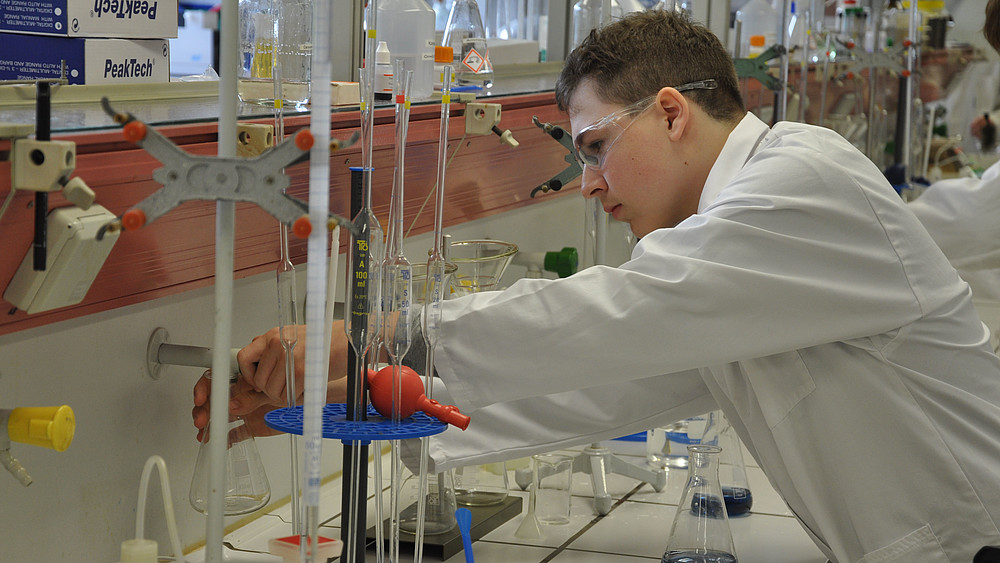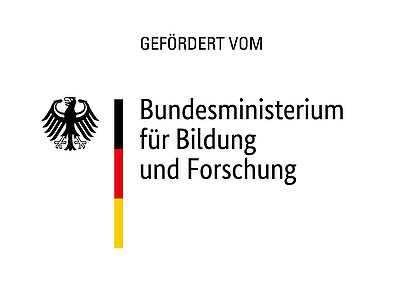Pupils from Geschwister-Scholl-Gymnasium Löbau explore our technical and scientific faculties.

When the Year 8 students presented the results of their science project week to parents, teachers, university staff and students from various grades last Friday, those present were amazed at the variety of topics, the good results and the happy & grateful students. Vice President for Education and International Affairs Prof. Christa Heidger, the Headmaster of Geschwister-Scholl-Gymnasium Dr. Dietmar Stephan and members of a jury were also in the audience. The latter selected the best presentations and awarded the students with book vouchers, which were provided by the Förderverein der Hochschule Zittau/Görlitz e. V., among others. Following the project week, the student groups are now creating posters on their respective project topics. These are also subjected to the scrutiny of a critical jury and the best ones are awarded prizes.
This is the fifth year in a row that class 8/5 of the Geschwister-Scholl-Gymnasium Löbau (GSG) has attended the science project week at the Zittau/Görlitz University of Applied Sciences. In nine different individual projects, the pupils, who themselves receive an in-depth mathematical and scientific education at GSG, were able to explore university laboratories, work with state-of-the-art research equipment, learn about common laboratory practices and try out scientific experiments for themselves. The university staff involved invested a great deal of time and commitment in opening up the world of science to the pupils through practical activities. In his speech, the principal expressed his gratitude for the close ties with the HSZG. The science project week is one of the most important milestones in the school education of this special class, which is unique in East Saxony.
This year, in the chemistry laboratory of the Faculty of Natural and Environmental Sciences (F-N), students found out what zeolites are and how they can help to soften water, for example to prevent the calcification of household appliances. The Institute for Process Development, Peat and Natural Product Research (iTN), on the other hand, sent its young researchers on a search for tiny particles. Bagged soup, nail varnish, sun cream and milk - using the "Analysette 22", diagrams were created of products that we come into contact with every day, which show the size distribution of the particles and which particle size occurs most frequently.
Two of the projects, both also provided by F-N, were field studies. One group went to the ground stream, the width and depth of which was checked at various points. To determine the quality of the water, the pupils identified the type and number of organisms living there, among other things. Other pupils were able to try out their skills as climate researchers and learned how to collect and evaluate weather data at the climate station in Zittau Zoo.
The project "All that glitters is not gold", which was offered by the Faculty of Mechanical Engineering in cooperation with the IOT, focused on the analysis of various metals and alloys as well as methods for surface and material characterization. The Department of Electrical Engineering opened the doors to its laboratories to two other groups. One of them dealt with sensor technology using the example of automated coin recognition. The other has been experimentally investigating the phenomenon of thermoelectricity, i.e. the mutual influence of temperature and electricity.
How much energy does a house need and where is there potential for savings? Students who spent their project week at the Faculty of Business Administration and Engineering Management (F-W) dealt with this question and drew up an energy certificate for a planned building. Group 9 was also allowed to experiment with a model of a wind turbine at the F-W and one student was totally committed to building a wind turbine model himself. The pupils checked how the output of the turbine changes when, for example, the wind strength increases or decreases or the angle of attack of the rotor blades is adjusted.
To mark the fifth anniversary of the science project week, two eleventh-graders from Geschwister-Scholl-Gymnasium agreed to record their classmates at work in the laboratories and document the entire project on film. Under the guidance of the Saxon Training and Testing Channel (SAEK) in Görlitz, the two boys planned, interviewed and filmed the individual projects and collected video material. This will now be used to create a video portrait of this special offer from the Zittau/Görlitz University of Applied Sciences for the eighth graders at GSG Löbau.
We would like to take this opportunity to express our thanks to the following members of staff at the university who made a significant contribution to the success of the project week: Dr. Reinhold, Mr. Kitta, Mr. Herrmann, Ms. Huwaldt, Ms. Kobelt, Ms. Franke, Dr. Vogel, Ms. Kupka, Prof. Weber, Mr. Jeschke, Dr. Gärtner, Mr. Pohl and Mr. Schäfer. We would also like to thank Mr. Kopte, who once again took over the organization from the school side and coordinated everything excellently, the SAEK Görlitz for the supervision of the young filmmakers and the Zittau Zoo.
